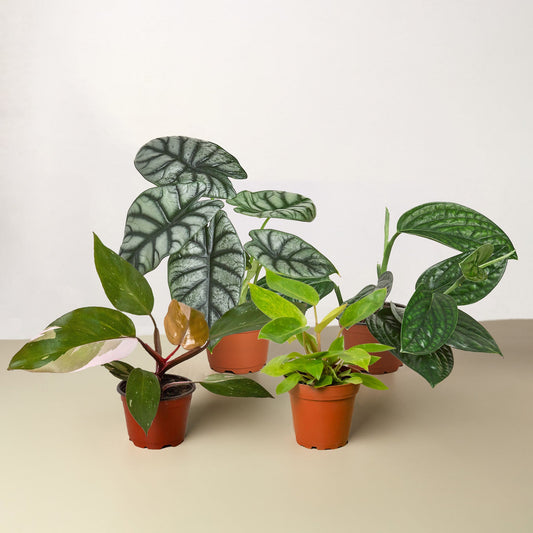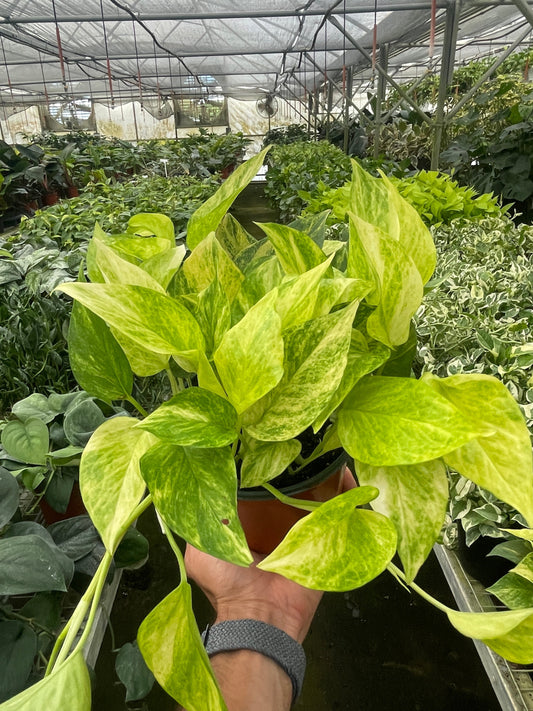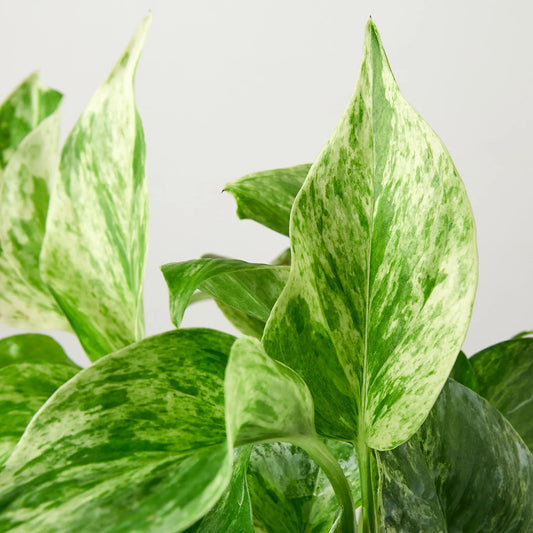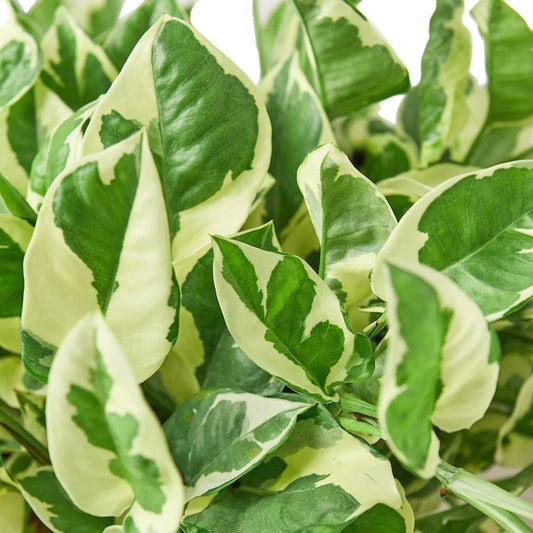Sensation Peace Lily Aerial Roots: Everything You Need to Know
Cafe Planta Team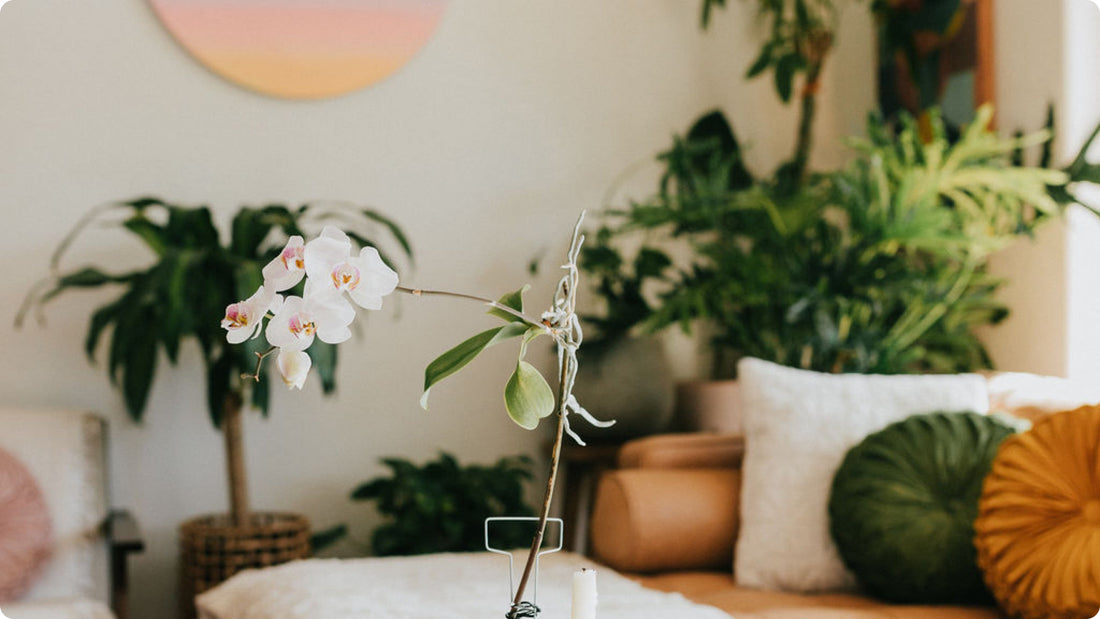
Picture this: a cozy corner of your home, sunlight streaming through the window, and a lush, green plant standing proudly. That's exactly the kind of atmosphere the Sensation Peace Lily can create. But if you've ever noticed those curious roots poking out from the soil or even above the pot, you might have found yourself scratching your head. What are these strange roots, and should you be worried?
In this article, we're here to unravel the mystery surrounding the aerial roots of the Sensation Peace Lily. We'll cover what they are, why they appear, how to care for them, and even how they can impact the overall health of your plant. Whether you're a seasoned plant lover or just getting started, there's something valuable for everyone. So, let's dig into the intriguing world of Sensation Peace Lily aerial roots!
Understanding Aerial Roots: What Are They?
First things first, let's talk about what aerial roots actually are. Simply put, these are roots that grow above the ground. Unlike the typical roots you might be familiar with that burrow deep into the soil, aerial roots appear to defy gravity, stretching out into the air. They're not exclusive to the Sensation Peace Lily; many plants, especially those native to tropical environments, develop them.
So, why do they exist? In their natural habitat, aerial roots serve several purposes. They help plants in humid environments absorb moisture from the air, provide additional support, and sometimes even help the plant climb surfaces. For the Sensation Peace Lily, these roots can be a sign that your plant is trying to adapt to its environment, seeking out more space, moisture, or nutrients.
Think of aerial roots like a plant's way of putting out feelers. They're exploring their surroundings, trying to make the most of the resources available to them. It's a fascinating adaptation that showcases just how resilient and resourceful nature can be.
Why Sensation Peace Lilies Develop Aerial Roots
Now that we've got a handle on what aerial roots are, let's talk about why your Sensation Peace Lily might develop them. While they can look a bit odd, they’re usually a natural part of the plant's growth. However, there are specific reasons why they might be more pronounced.
One common cause is a need for more humidity. Sensation Peace Lilies are native to tropical regions where humidity levels are high. In your home, especially during dry seasons or if you live in a drier climate, the plant might produce aerial roots to try and capture more moisture from the air.
Another reason could be overcrowding in the pot. If the roots in the soil are running out of space, the plant may start to send out aerial roots as an alternative route for growth. This can happen when your plant has become root-bound, meaning it's outgrown its pot and needs more room to thrive.
Interestingly enough, aerial roots can also be a response to nutrient deficiencies. If the soil lacks essential nutrients, the plant might try to reach out for more. In such cases, a good quality, nutrient-rich fertilizer can help address the issue.
Caring for Aerial Roots: The Do's and Don'ts
Alright, so your Sensation Peace Lily has aerial roots. What do you do now? The good news is that caring for these roots isn't as complicated as it might seem. Here are some straightforward tips to keep your plant happy and healthy.
Do's:
- Increase Humidity: Use a humidifier or place your plant on a tray with water and pebbles to boost humidity levels. This can help satisfy the plant's need for moisture.
- Repot If Needed: If your plant is root-bound, consider moving it to a larger pot to give it more room to grow. This can prevent the excessive development of aerial roots.
- Provide Support: If the aerial roots are particularly long, you can gently tuck them back into the soil or provide a support structure for them to climb.
Don'ts:
- Don't Cut Them Off: While it might be tempting to trim the aerial roots for aesthetic reasons, this can harm the plant. They're part of its natural growth process.
- Avoid Overwatering: Aerial roots don't mean your plant needs more water in the soil. In fact, overwatering can lead to root rot, which is more harmful.
- Don't Ignore Them: While aerial roots aren't usually a cause for concern, they can indicate underlying issues like low humidity or nutrient deficiencies. Pay attention to your plant's overall health.
Encouraging Healthy Growth
To help your Sensation Peace Lily thrive, it's important to focus on creating an ideal environment that satisfies all its needs. By doing so, you can ensure that any aerial roots that do appear are a healthy part of the plant's growth and not a sign of distress.
Start by placing your plant in a location where it receives bright, indirect light. Direct sunlight can scorch the leaves, while too little light can stunt growth. Aim for a spot where your plant gets plenty of light but isn't exposed to harsh rays.
Keep an eye on the soil moisture as well. Peace Lilies prefer slightly moist soil, but they don't like to sit in waterlogged conditions. Let the top inch of soil dry out between waterings. This routine helps prevent root rot and encourages healthy root development.
When it comes to fertilizing, a balanced liquid fertilizer applied during the growing season (spring and summer) can provide the nutrients your Peace Lily needs to flourish. This can also help address any nutrient deficiencies that might be contributing to aerial root growth.
Potting and Soil Considerations
If you've noticed a surge in aerial roots and suspect it's due to overcrowding, it might be time to repot your plant. But before you grab the nearest pot, there are a few things to consider.
Firstly, choose a pot that's about 2 inches larger in diameter than the current one. This gives your plant room to grow without overwhelming it with too much space. A pot with drainage holes is essential to prevent waterlogging, which can lead to root rot.
When it comes to soil, a well-draining potting mix is your best bet. You can use a standard houseplant mix and add some perlite or orchid bark to improve drainage. This ensures that the roots have access to air and reduces the risk of overwatering.
Repotting is best done during the growing season when your plant is most resilient to changes. Gently remove the plant from its current pot, loosen the roots, and place it in the new pot with fresh soil. Water it thoroughly and give it some time to adjust to its new home.
Dealing with Pests and Other Issues
No plant journey is without its challenges, and dealing with pests is one of them. Thankfully, the Sensation Peace Lily is relatively resistant to pests, but that doesn't mean it's immune. Common culprits include spider mites, aphids, and mealybugs.
If you spot any unwelcome visitors, there are a few strategies you can use to evict them. A gentle spray with water can dislodge pests, or you can use a mild insecticidal soap or neem oil for a more targeted approach. It's always a good idea to test any treatment on a small area first to make sure your plant doesn't react negatively.
Beyond pests, keep an eye out for signs of overwatering or underwatering. Yellowing leaves can be a sign of too much water, while dry, crispy leaves indicate a lack of moisture. Adjust your watering routine as needed to keep your plant happy and healthy.
Incorporating Sensation Peace Lilies into Your Interior Design
One of the joys of owning a Sensation Peace Lily is how effortlessly it can elevate the aesthetics of your home. With its striking foliage and elegant white blooms, it's a versatile plant that fits into various interior design styles.
Consider using your Peace Lily as a statement piece in a room with neutral tones. Its deep green leaves can provide a contrast that draws the eye and adds a touch of nature to the space. You can also pair it with other plants of varying heights and textures to create an indoor jungle vibe.
For a more minimalist look, place your Peace Lily in a simple ceramic pot and let its natural beauty shine. It's a great way to add a pop of green without overwhelming the space.
Remember, the key to incorporating plants into your decor is balance. Too many can make a space feel cluttered, while too few might not create the desired effect. Play around with different arrangements until you find the perfect setup for your home.
The Emotional Benefits of Caring for Plants
Beyond their aesthetic appeal, plants like the Sensation Peace Lily can have a positive impact on our emotional well-being. Caring for plants is a rewarding experience, offering a sense of accomplishment and a connection to nature.
There's something soothing about tending to a plant, watching it grow, and knowing that your care contributes to its vitality. It's a gentle reminder of the power of nurturing and patience.
Plants also have a way of bringing a sense of calm to a space. The greenery can help reduce stress and improve concentration, making your home feel like a sanctuary from the hustle and bustle of everyday life.
So, the next time you're watering your Peace Lily or admiring its aerial roots, take a moment to appreciate the simple joy it brings to your home. It's more than just a plant; it's a living companion that enriches your life in subtle, yet meaningful ways.
Final Thoughts
The fascinating world of Sensation Peace Lily aerial roots may seem complex, but it's all about understanding your plant's needs and adapting to them. By recognizing the reasons behind these curious roots and caring for them appropriately, you can ensure your plant remains healthy and vibrant.
At Cafe Planta, we're passionate about helping you care for your plants. Whether you're looking for plant care accessories, unique houseplants, or just some friendly advice, we've got you covered. Feel free to reach out via email or drop us a message on Instagram. We believe in the power of plants to inspire and connect, and we're excited to be part of your plant journey. Happy planting!




